Abstract
1. The force-velocity (P-V) relation from a single fibres isolated from the semitendinosus muscle of the frog was determined at pre-set times during the rise of tension and the plateau of isometric tetani. The controlled-velocity release method was used. Experiments were performed at about 2.25 micrometers sarcomere length and at 3-4 degrees C or at 19-21 degrees C. 2. Replacing H2O with D2O resulted in a rapid large reduction of the peak twitch tension and of the speed of development of twitch and tetanic tensions. The tetanic tension (P0) was usually reduced, in certain fibres to as low as 5% of the value in H2O-Ringer solution. 3. The depression of twitch and tetanus characteristics was followed by a recovery, the duration of which varied greatly in different fibres. During the recovery period previous conditioning activity potentiated the tetanus characteristics. 4. After the end of the recovery period in D2O-Ringer solution both the peak twitch tension and the speed of development of tetanic tension was still greatly depressed, whereas the value of P0 was slightly greater than in H2O-Ringer. The speed of rise of isometric tension after a quick release imposed at the tetanus plateau was reduced in D2O-Ringer, usually to about 50% of the value in H2O-Ringer. 5. D2O increased the development time of the P-V relation and produced a conspicuous increase in the degree of its curvature. The value of V0 (the velocity of shortening at zero load) was not significantly depressed by D2O and it was the same independent both of the time after the beginning of stimulation and of the isometric tension at which the measurement was made. The P-V relation attained its final characteristics before the isometric tension reached the plateau. During the recovery period in D2O-Ringer, at the plateau of isometric tetani of different size, the relative force exerted at a given velocity of shortening was constant. 6. In D2O-treated fibres, NO3- and caffeine (i) potentiated the peak twitch tension and the speed of development of tetanic tension without affecting significantly the speed of the redevelopment of tension after a quick release imposed at the tetanus plateau and (ii) reduced the development time of the P-V relation, but did not affect either the degree of its curvature or the value of V0 and P0. 7. The results are discussed by assuming that the release of Ca2+ from the sarcoplasmic reticulum is a rate-limiting process for the development of activation and in turn for the development of isometric tension. In terms of the cross-bridge model of Huxley (1957), the time or Ca2+-dependent factor of activation appears to be the recruitment of actin sites for cross-bridge formation, whereas the value of the rate constants regulating the cross-bridge kinetics appears to be time and Ca2+-independent.
Full text
PDF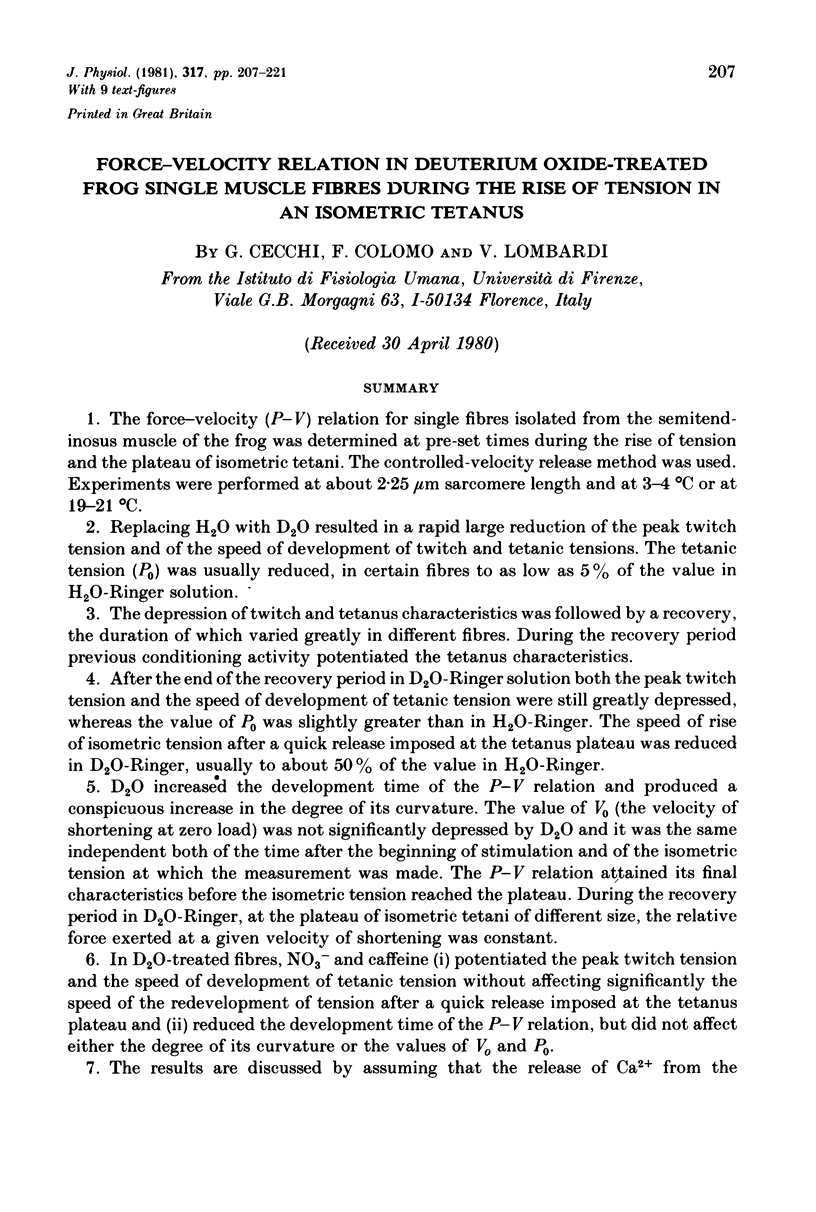
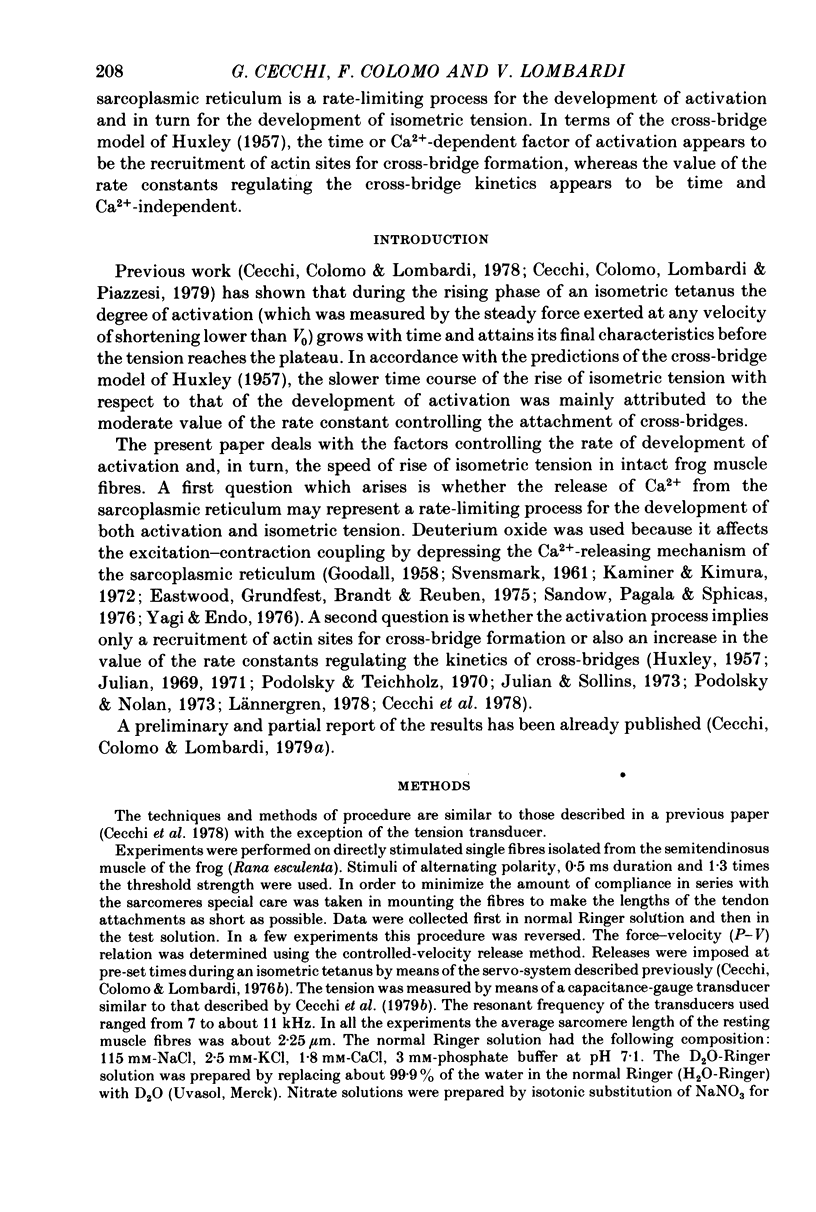
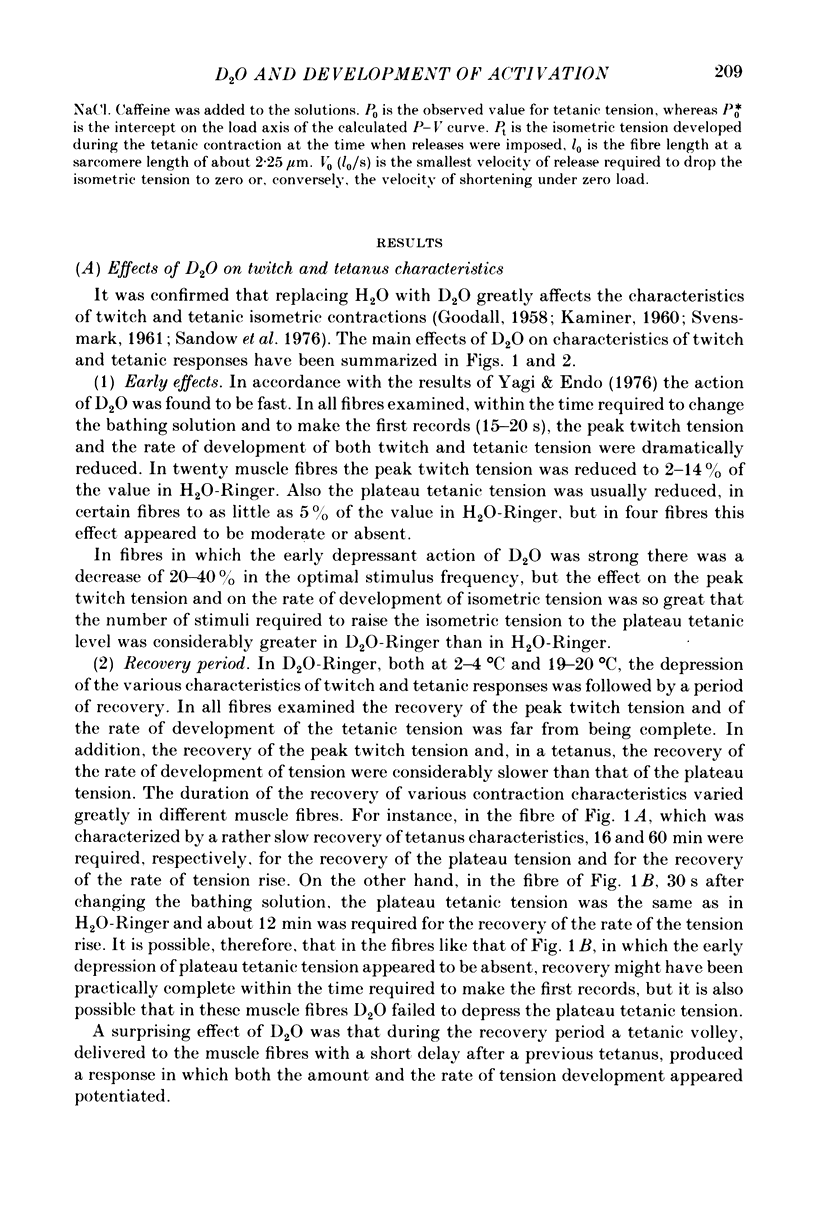
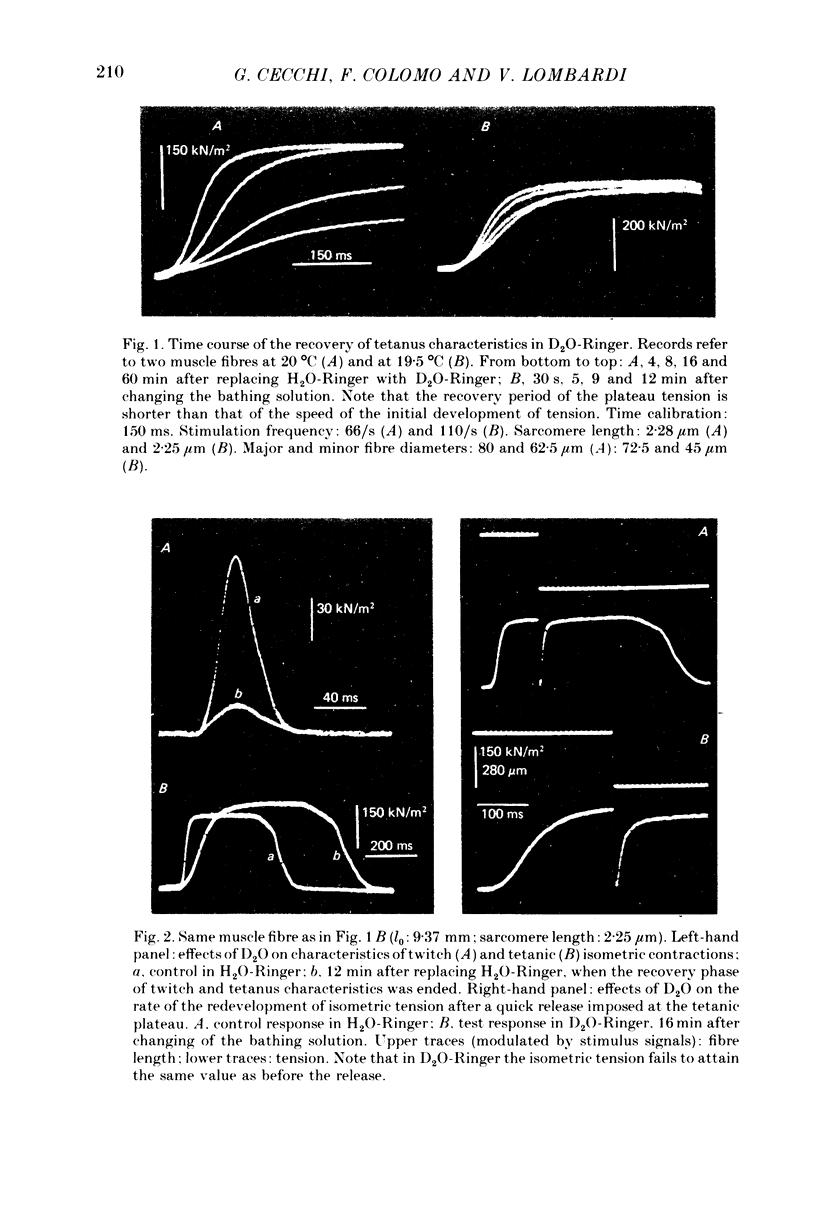
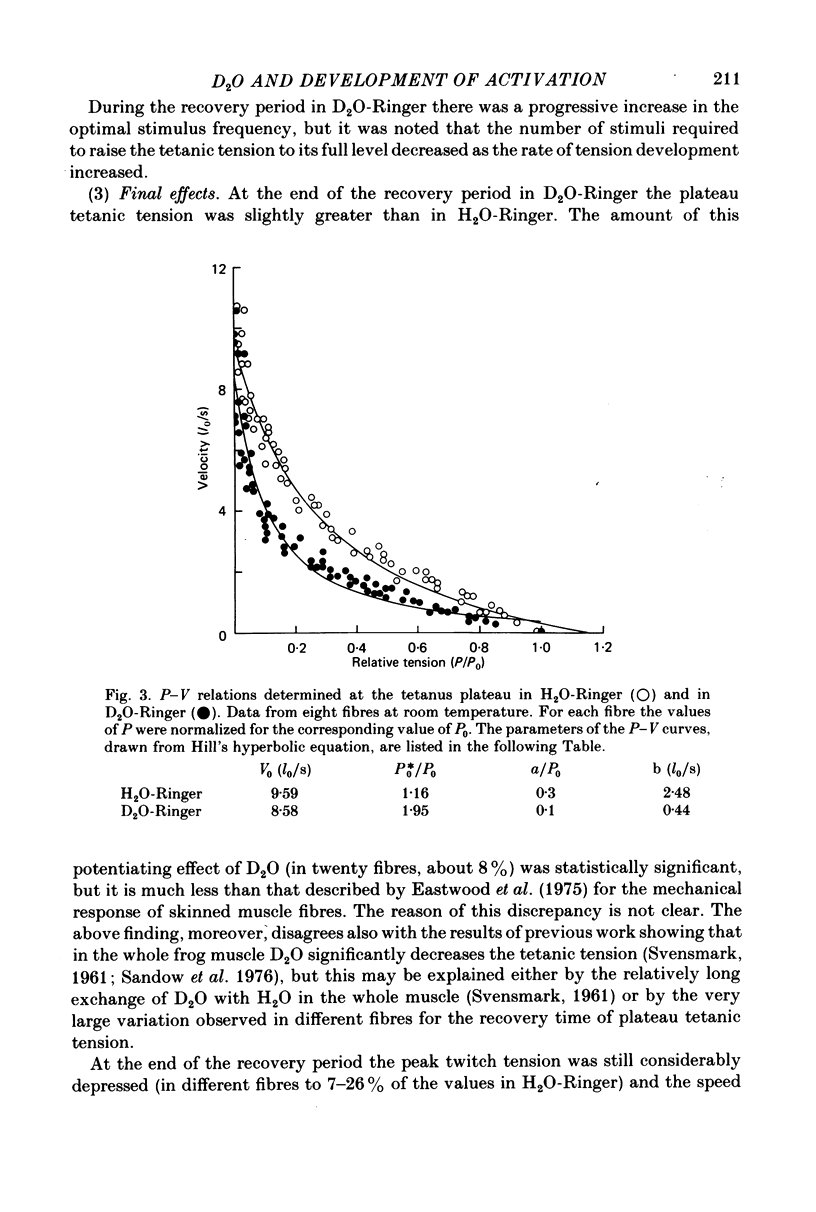
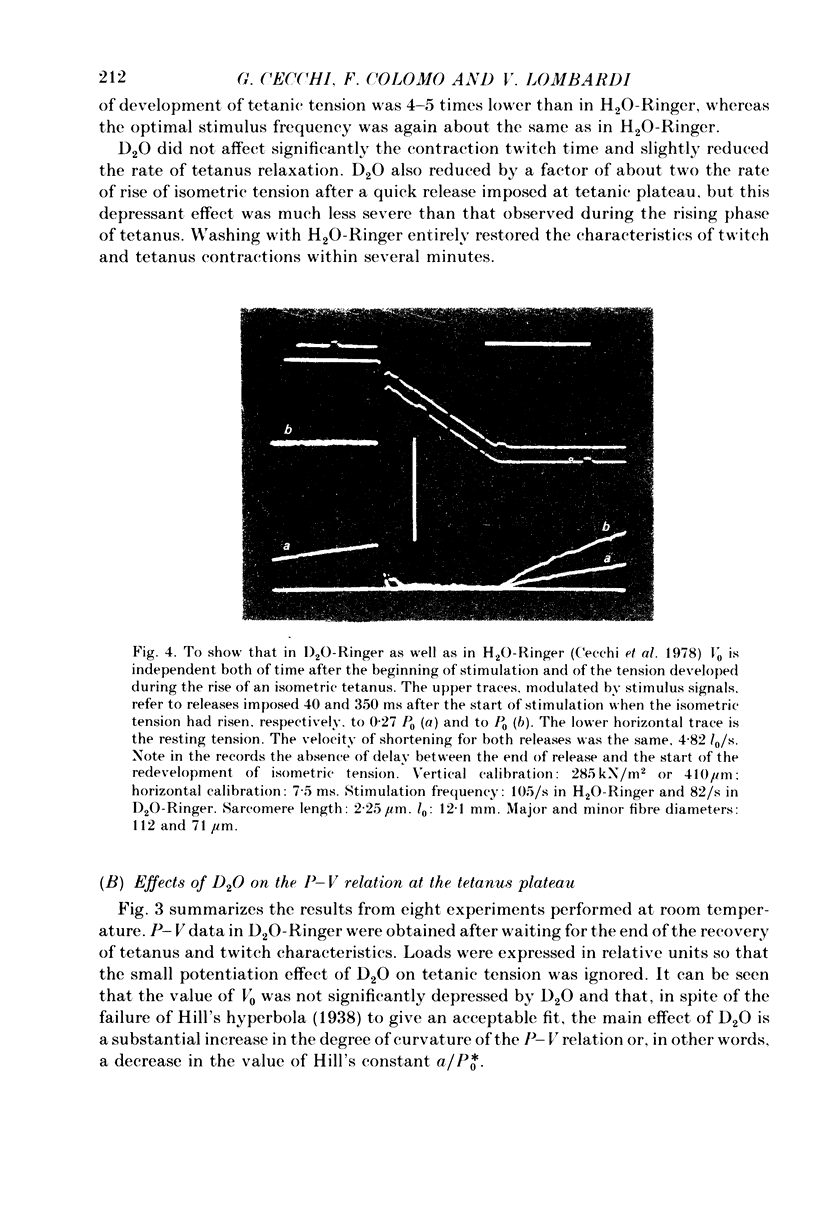
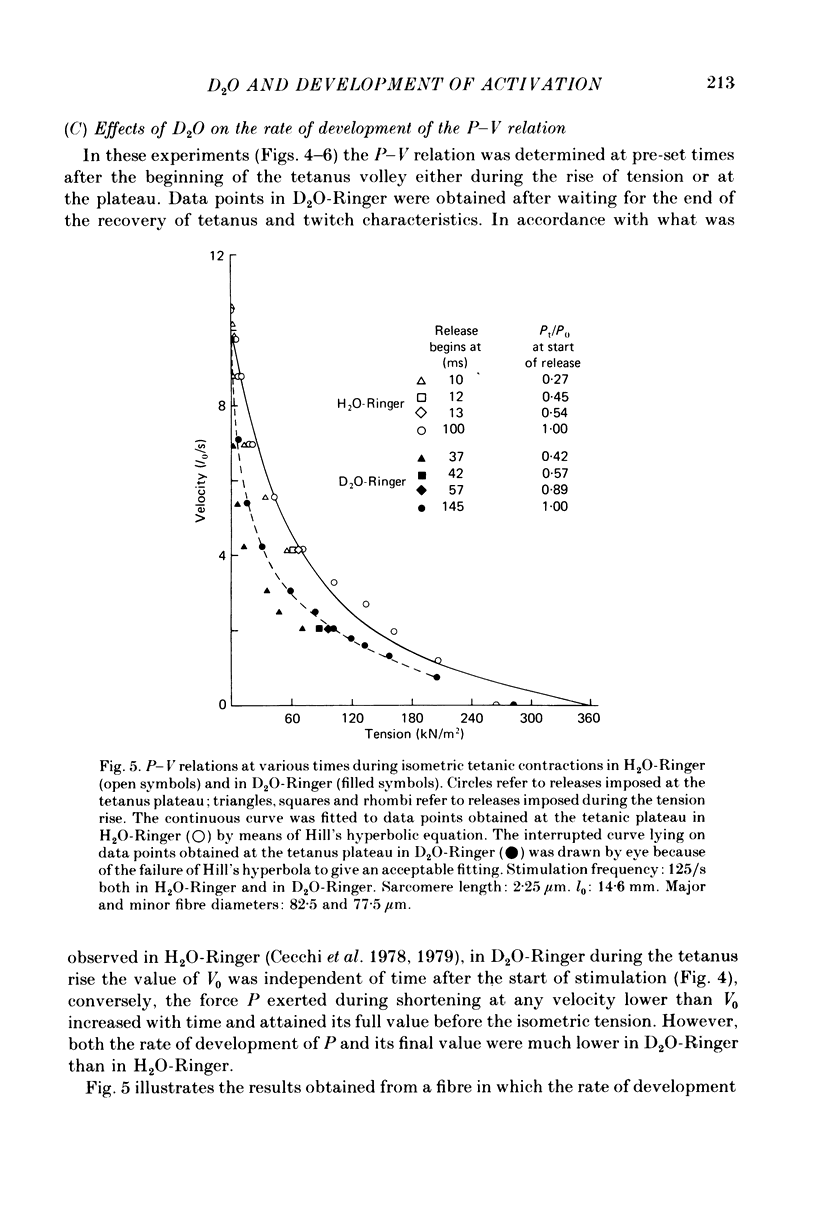
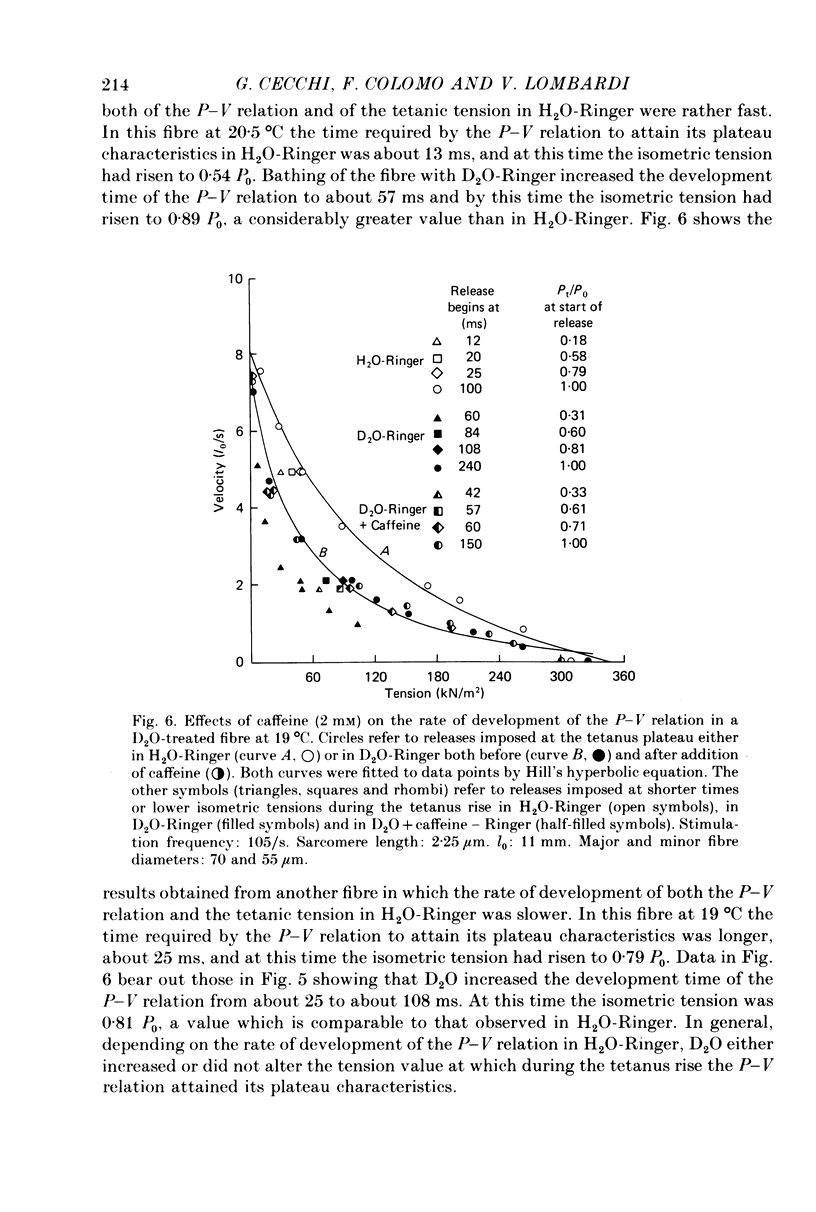
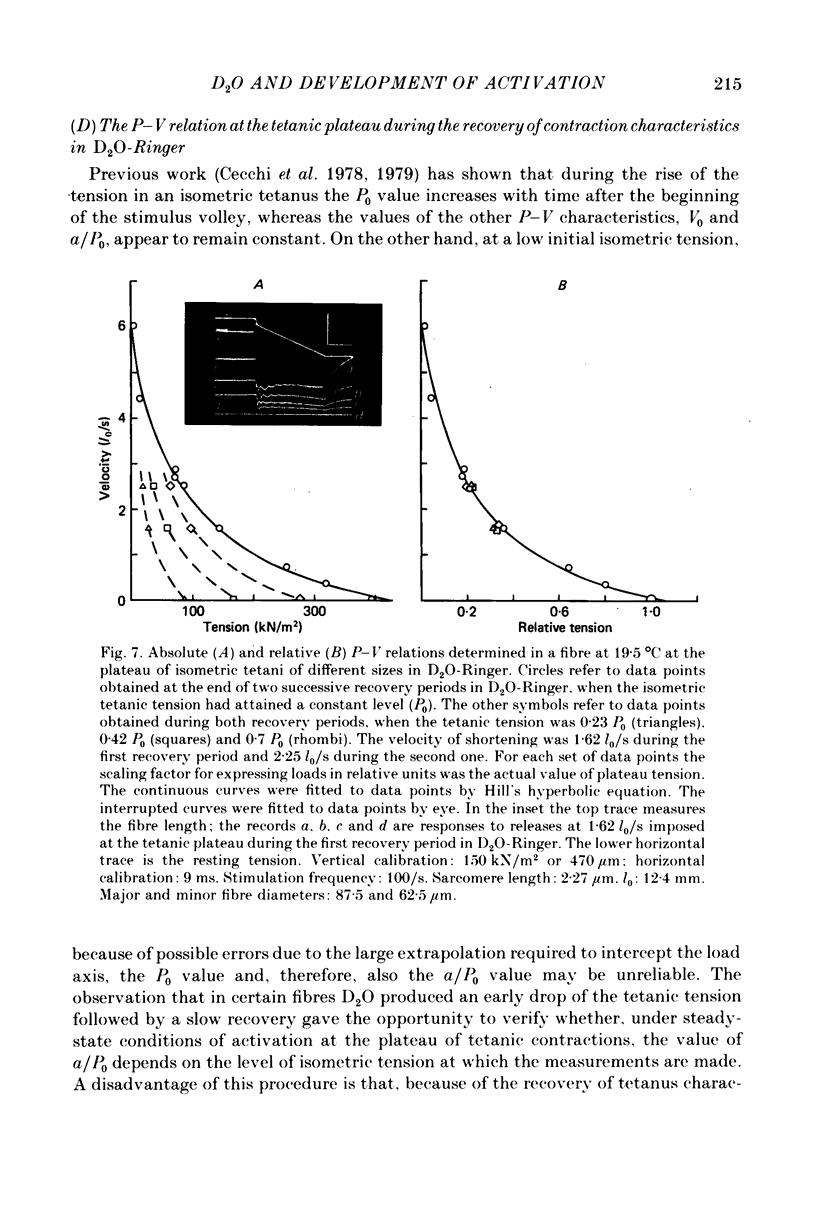
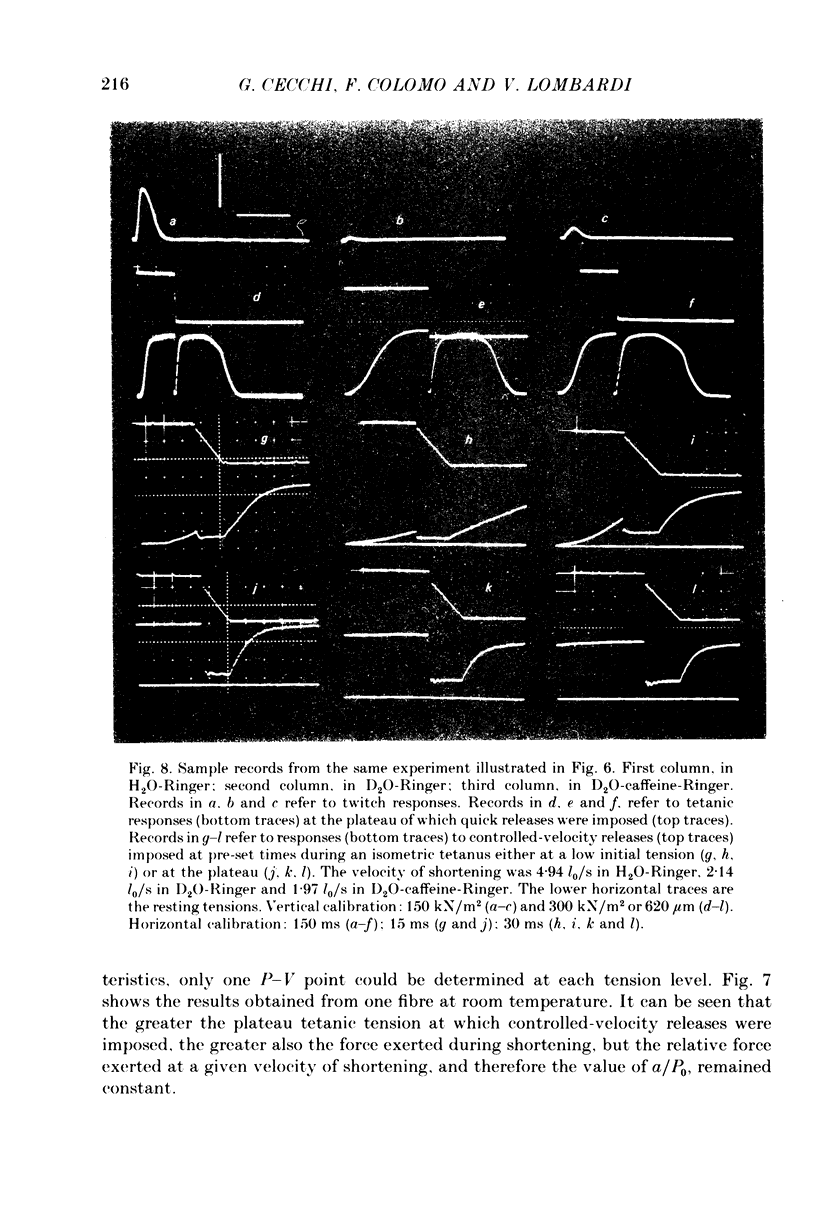
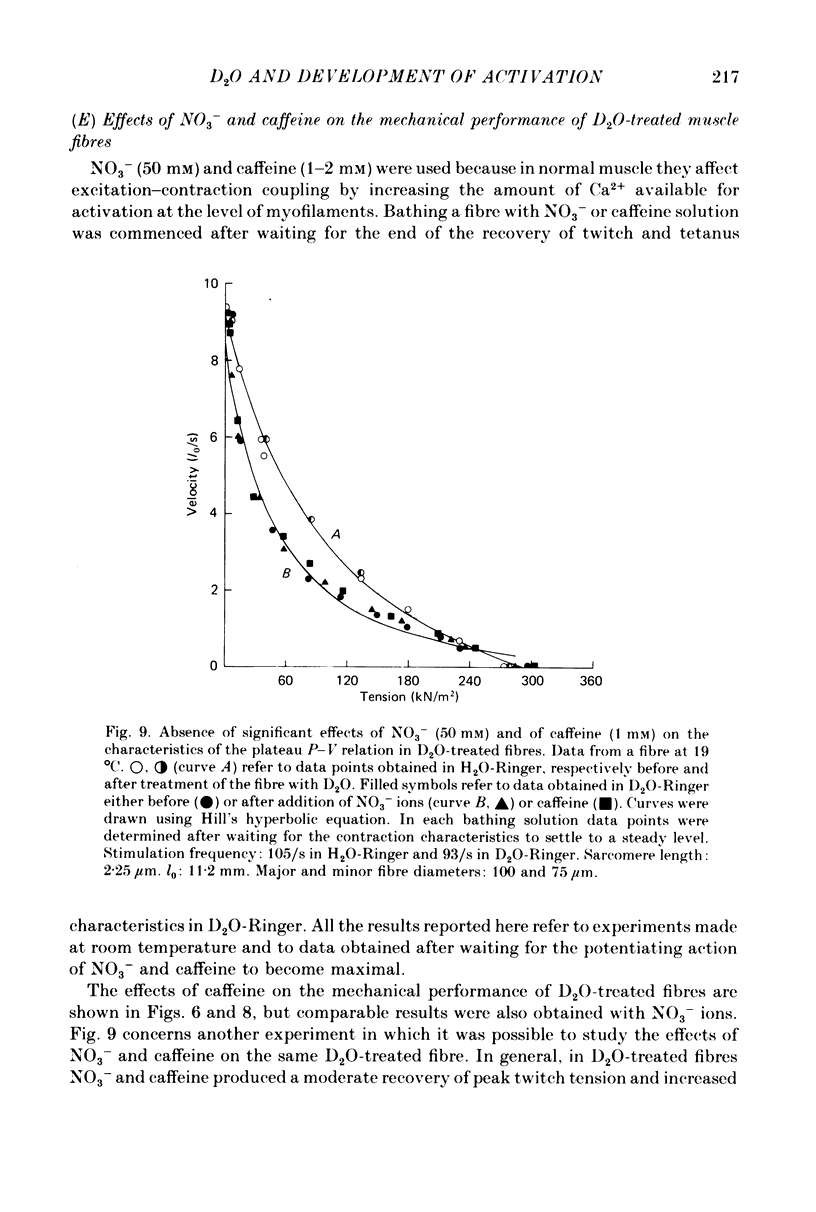
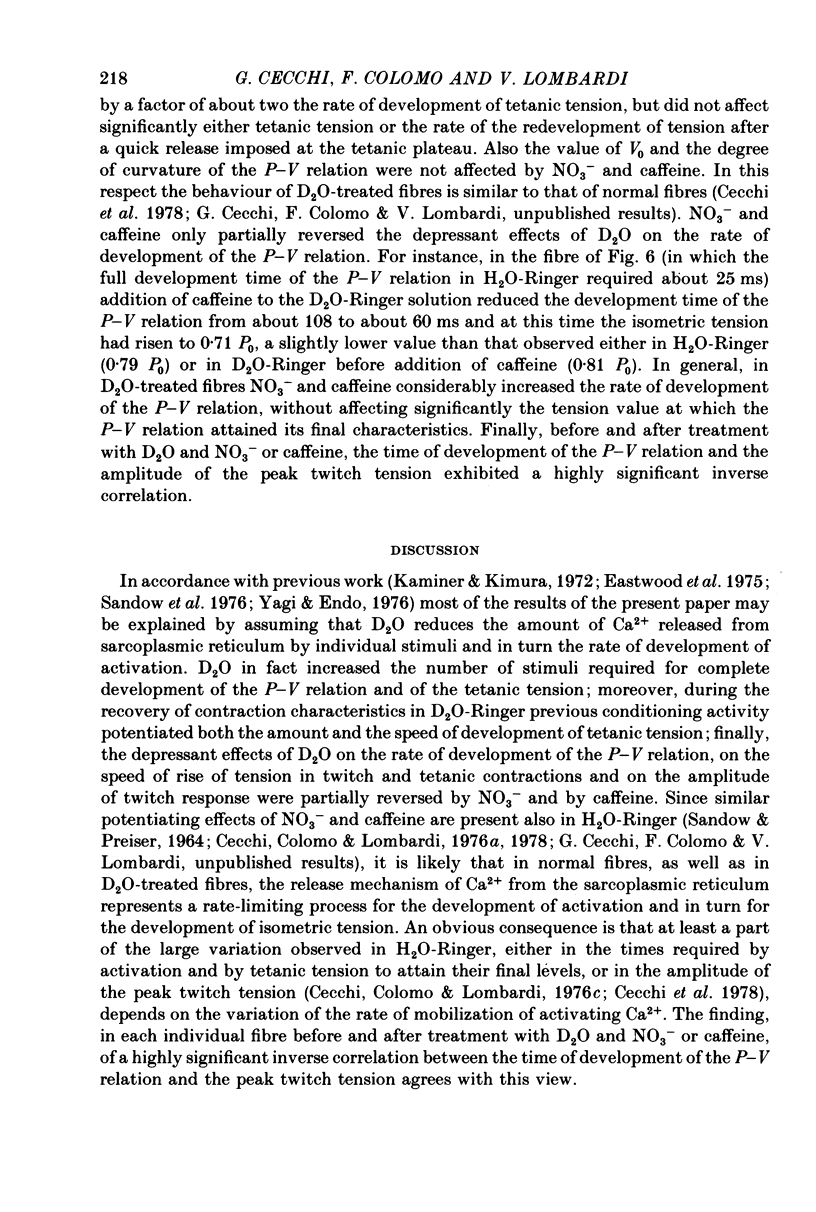
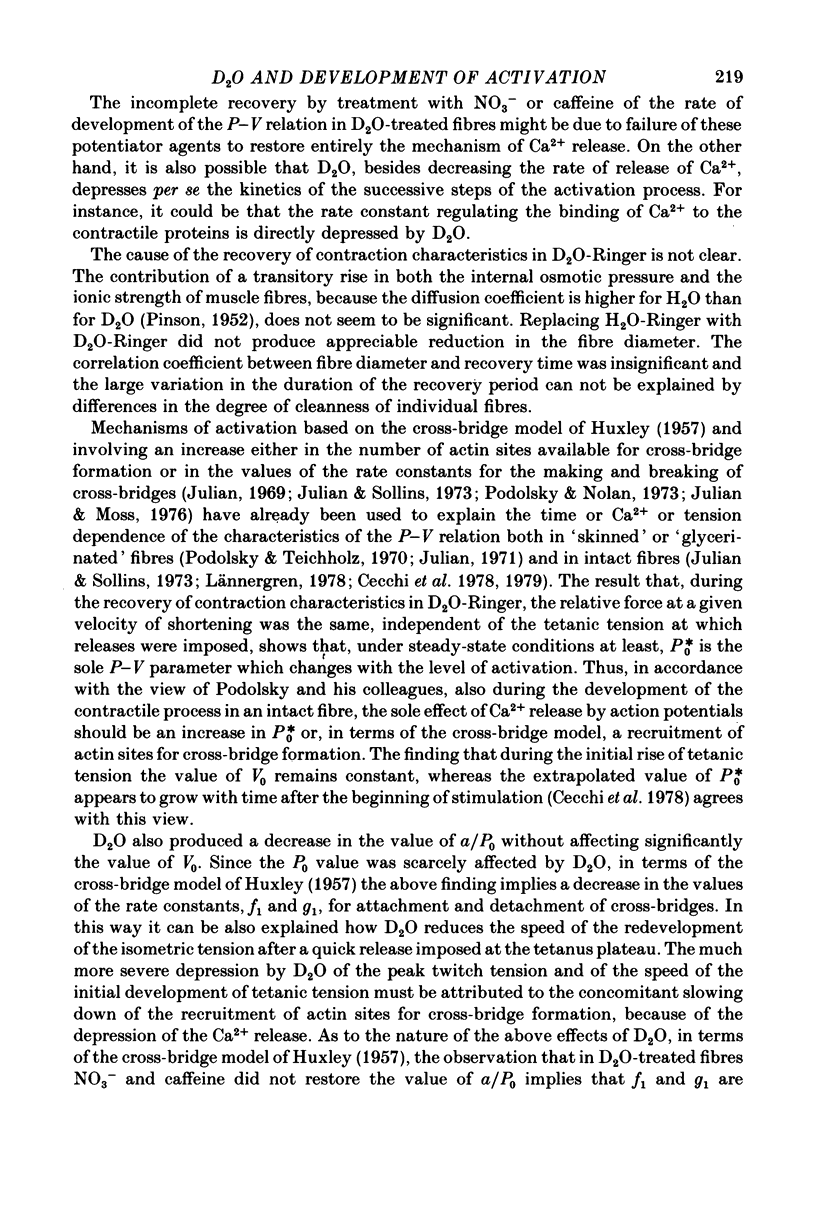
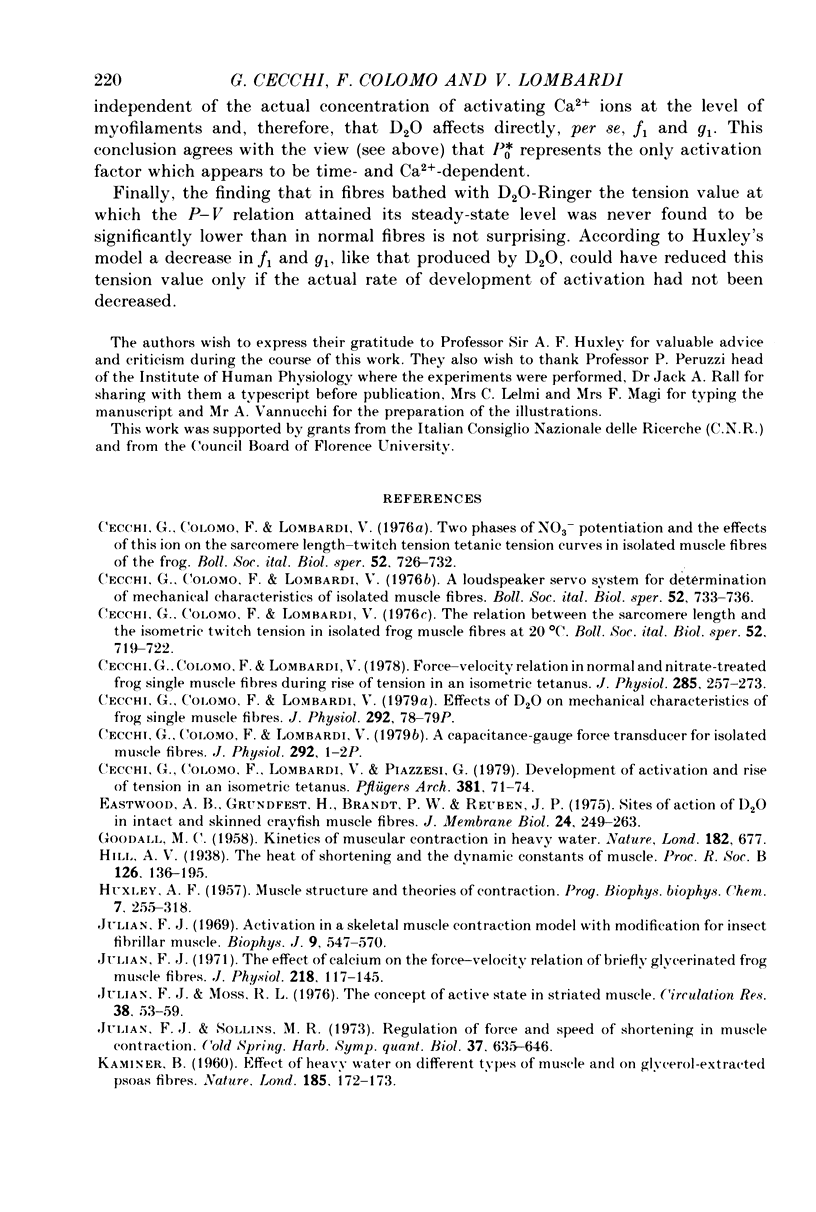
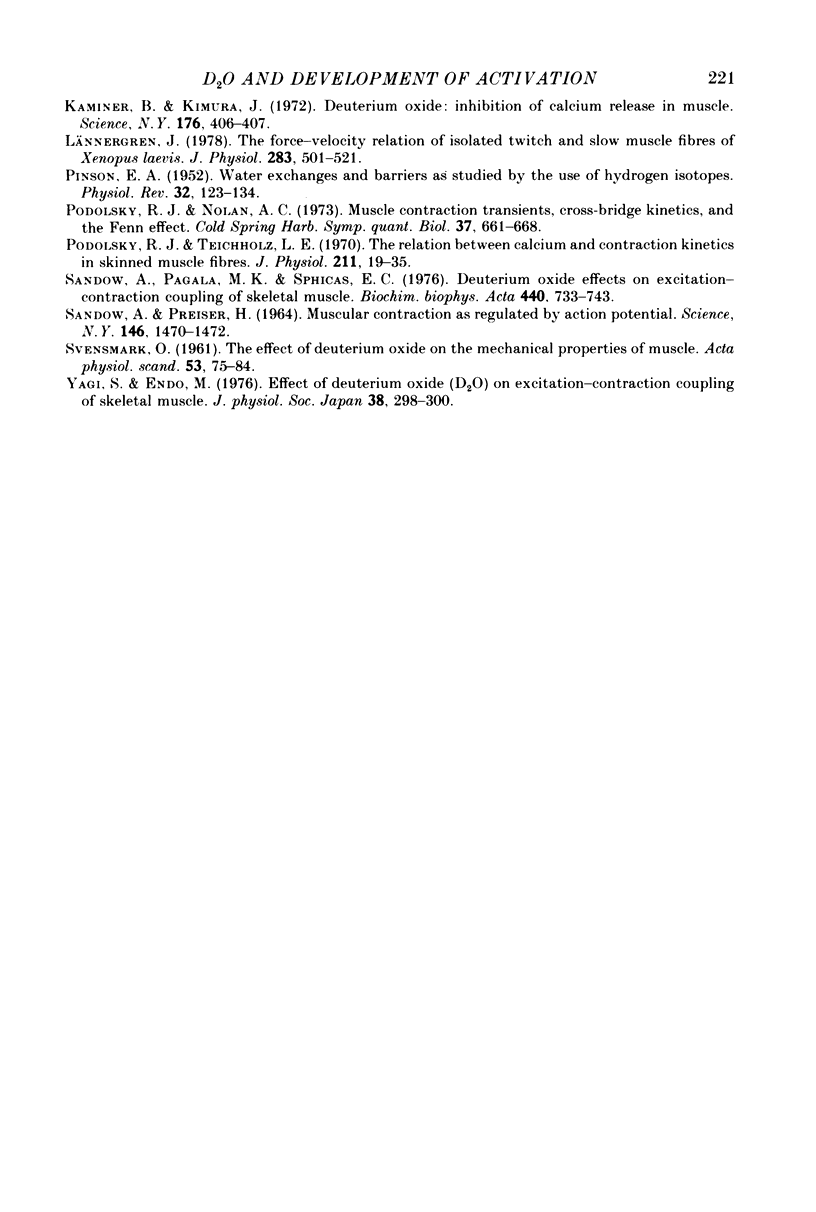
Selected References
These references are in PubMed. This may not be the complete list of references from this article.
- Cecchi G., Colomo F., Lombardi V. A loudspeaker servo system for determination of mechanical characteristics of isolated muscle fibres. Boll Soc Ital Biol Sper. 1976 May 30;52(10):733–736. [PubMed] [Google Scholar]
- Cecchi G., Colomo F., Lombardi V. Effects of D20 on mechanical characteristics of frog single muscle fibres [proceedings]. J Physiol. 1979 Jul;292:78P–79P. [PubMed] [Google Scholar]
- Cecchi G., Colomo F., Lombardi V. Force-velocity relation in normal and nitrate-treated frog single muscle fibres during rise of tension in an isometric tetanus. J Physiol. 1978 Dec;285:257–273. doi: 10.1113/jphysiol.1978.sp012570. [DOI] [PMC free article] [PubMed] [Google Scholar]
- Cecchi G., Colomo F., Lombardi V., Piazzesi G. Development of activation and rise of tension in an isometric tetanus. Pflugers Arch. 1979 Jul;381(1):71–74. doi: 10.1007/BF00582334. [DOI] [PubMed] [Google Scholar]
- Cecchi G., Colomo F., Lombardi V. Two phases of NO-3-potentiation and the effects of this ion on the sarcomere length -twitch tension -tetanic tension curves in isolated muscle fibres of the frog. Boll Soc Ital Biol Sper. 1976 May 30;52(10):726–732. [PubMed] [Google Scholar]
- Cecchi G., Colomo F., Lombardi V. [The relation between the sarcomere length and the isometric twitch tension in isolated frog muscle fibres at 20 degrees C]. Boll Soc Ital Biol Sper. 1976 May 30;52(10):719–722. [PubMed] [Google Scholar]
- Eastwood A. B., Grundfest H., Brandt P. W., Reuben J. P. Sites of action of D2O in intact and skinned crayfish muscle fibers. J Membr Biol. 1975 Dec 4;24(3-4):249–263. doi: 10.1007/BF01868626. [DOI] [PubMed] [Google Scholar]
- GOODALL M. C. Kinetics of muscular contraction in heavy water. Nature. 1958 Sep 6;182(4636):677–677. doi: 10.1038/182677a0. [DOI] [PubMed] [Google Scholar]
- HUXLEY A. F. Muscle structure and theories of contraction. Prog Biophys Biophys Chem. 1957;7:255–318. [PubMed] [Google Scholar]
- Julian F. J. Activation in a skeletal muscle contraction model with a modification for insect fibrillar muscle. Biophys J. 1969 Apr;9(4):547–570. doi: 10.1016/S0006-3495(69)86403-9. [DOI] [PMC free article] [PubMed] [Google Scholar]
- Julian F. J., Moss R. L. The concept of active state in striated muscle. Circ Res. 1976 Feb;38(2):53–59. doi: 10.1161/01.res.38.2.53. [DOI] [PubMed] [Google Scholar]
- Kaminer B., Kimura J. Deuterium oxide: inhibition of calcium release in muscle. Science. 1972 Apr 28;176(4033):406–407. doi: 10.1126/science.176.4033.406. [DOI] [PubMed] [Google Scholar]
- Lännergren J. The force-velocity relation of isolated twitch and slow muscle fibres of Xenopus laevis. J Physiol. 1978 Oct;283:501–521. doi: 10.1113/jphysiol.1978.sp012516. [DOI] [PMC free article] [PubMed] [Google Scholar]
- PINSON E. A. Water exchanges and barriers as studied by the use of hydrogen isotopes 1. Physiol Rev. 1952 Apr;32(2):123–134. doi: 10.1152/physrev.1952.32.2.123. [DOI] [PubMed] [Google Scholar]
- Podolsky R. J., Teichholz L. E. The relation between calcium and contraction kinetics in skinned muscle fibres. J Physiol. 1970 Nov;211(1):19–35. doi: 10.1113/jphysiol.1970.sp009263. [DOI] [PMC free article] [PubMed] [Google Scholar]
- SANDOW A., PREISER H. MUSCULAR CONTRACTION AS REGULATED BY THE ACTION POTENTIAL. Science. 1964 Dec 11;146(3650):1470–1472. doi: 10.1126/science.146.3650.1470. [DOI] [PubMed] [Google Scholar]
- SVENSMARK O. The effect of deuterium oxide on the mechanical properties of muscle. Acta Physiol Scand. 1961 Sep;53:75–84. doi: 10.1111/j.1748-1716.1961.tb02265.x. [DOI] [PubMed] [Google Scholar]
- Sandow A., Pagala M. D., Sphicas E. C. Deuterium oxide effects on excitation-contraction coupling of skeletal muscle. Biochim Biophys Acta. 1976 Sep 13;440(3):733–743. doi: 10.1016/0005-2728(76)90055-4. [DOI] [PubMed] [Google Scholar]
- Yagi S., Endo M. Effect of deuterium oxide (D2O) on excitation-contraction coupling of skeletal muscle. Nihon Seirigaku Zasshi. 1976 Jul 1;38:298–300. [PubMed] [Google Scholar]


